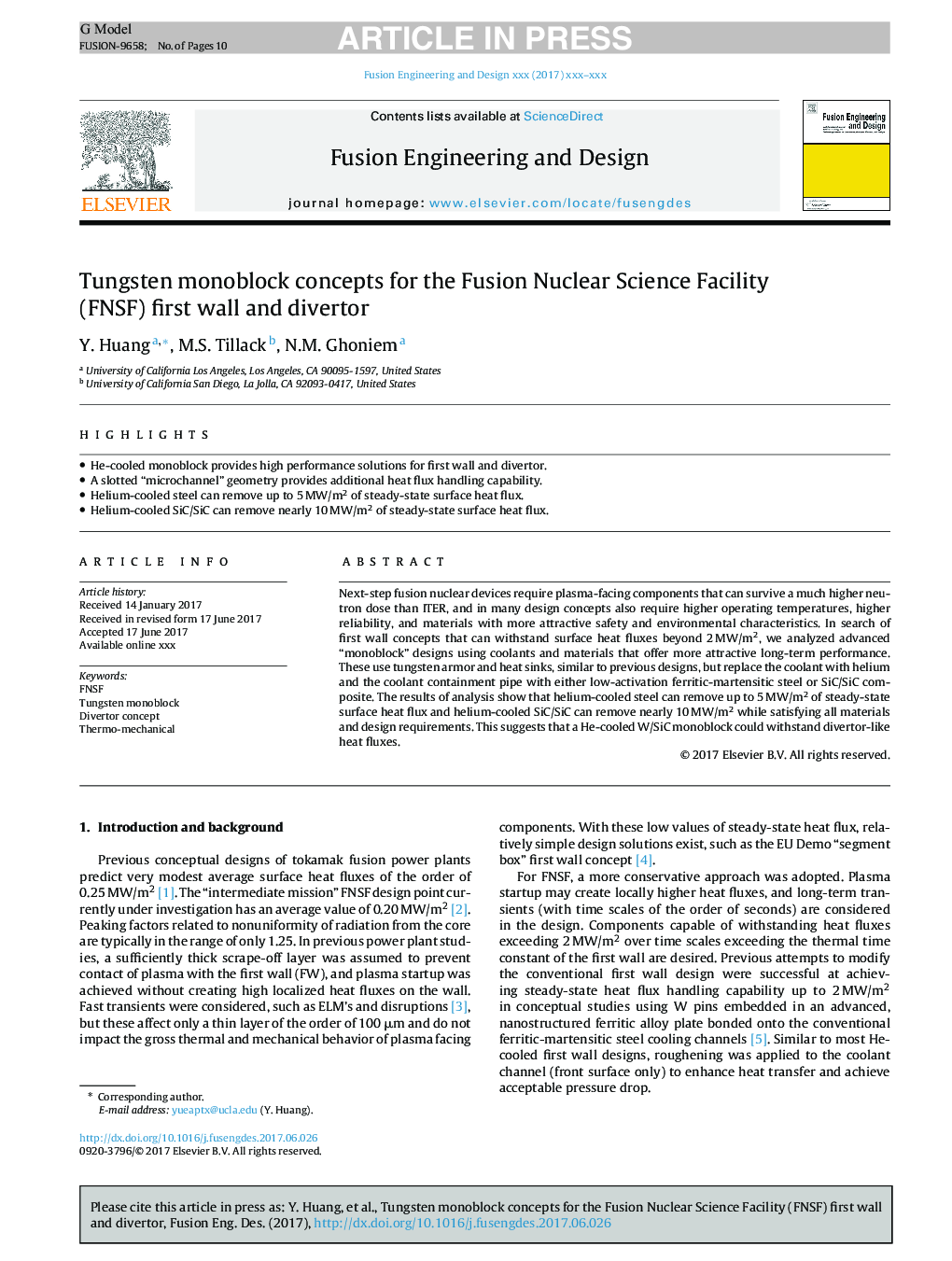| Article ID | Journal | Published Year | Pages | File Type |
|---|---|---|---|---|
| 10225359 | Fusion Engineering and Design | 2018 | 10 Pages |
Abstract
Next-step fusion nuclear devices require plasma-facing components that can survive a much higher neutron dose than ITER, and in many design concepts also require higher operating temperatures, higher reliability, and materials with more attractive safety and environmental characteristics. In search of first wall concepts that can withstand surface heat fluxes beyond 2Â MW/m2, we analyzed advanced “monoblock” designs using coolants and materials that offer more attractive long-term performance. These use tungsten armor and heat sinks, similar to previous designs, but replace the coolant with helium and the coolant containment pipe with either low-activation ferritic-martensitic steel or SiC/SiC composite. The results of analysis show that helium-cooled steel can remove up to 5Â MW/m2 of steady-state surface heat flux and helium-cooled SiC/SiC can remove nearly 10Â MW/m2 while satisfying all materials and design requirements. This suggests that a He-cooled W/SiC monoblock could withstand divertor-like heat fluxes.
Keywords
Related Topics
Physical Sciences and Engineering
Energy
Energy Engineering and Power Technology
Authors
Y. Huang, M.S. Tillack, N.M. Ghoniem,
